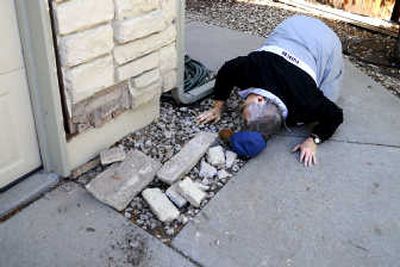Earthquakes have residents worried, experts baffled

MOGUL, Nev. – An unusually intense swarm of earthquakes – more than 1,000 over the past two months – has struck directly beneath a small suburb of Reno, leaving residents shaken and scientists puzzling over the cause.
More than 20 quakes of magnitude 2 or higher have hit on some days, and the intensity and frequency of the quakes has been increasing over time rather than following the normal pattern of trailing off.
Although Nevada is the second most seismically active state in the continental United States, researchers say they have never seen anything quite like the “Mogul earthquake sequence,” as they have named it.
“We don’t know what is going to happen next,” said geologist James Dolan of University of Southern California, who has been watching the unfolding seismic activity. But a swarm like this “makes you perk up your ears and start considering the possibility that you might be in a heightened period of hazard.”
The swarm of quakes has unnerved the roughly 3,000 residents who live around Mogul, a sparse community of ranch homes located about two miles west of Reno.
“I lie in bed at night and I can feel” the quakes, said 72-year-old retired pressman Howard Seeman as he sipped a glass of white wine in Moxie’s, a neighborhood bar close to Mogul. “It’s scary, and you never know what is coming next.”
Still, with the biggest quake so far measuring a modest magnitude 4.7, residents are keeping their sense of humor about it.
Some folks “are joking about moving to California to get away from the earthquakes,” Seeman said.
The Mogul sequence began Feb. 28 with a small tremor about a mile beneath the town. Over the following weeks, repeated small quakes struck the area.
About every third day or so, there would be a quake with a magnitude greater than 2 mixed in with the smaller temblors, said Nevada state geologist Jonathan Price.
The number of daily quakes grew slowly, and then a shift in the pattern occurred on April 15, when magnitude-2 quakes began occurring about three times a day.
On April 24, the area suffered a magnitude 4.2 quake and the number of magnitude 2 temblors jumped to 20 a day or more, he said. Before April 22, there had been more than 400 quakes. Last week alone, there were 500.
The biggest series of quakes so far struck last Friday evening – a magnitude 3.3 temblor, followed 11 seconds later by a magnitude 4.7 and then a 3.4 three minutes after that.
Normally, in an earthquake swarm, the main shock hits and then is followed by a series of ever smaller quakes. But this swarm “has been growing with time, which is actually quite unusual,” said geologist Brian Wernicke of the California Institute of Technology. “I can’t think of any other example where that has happened.”
Earthquake swarms also usually occur much deeper, at least five miles below the surface and often much deeper than that.
“It’s very, very rare to get earthquakes of any kind in the upper kilometer,” said USC’s Dolan.